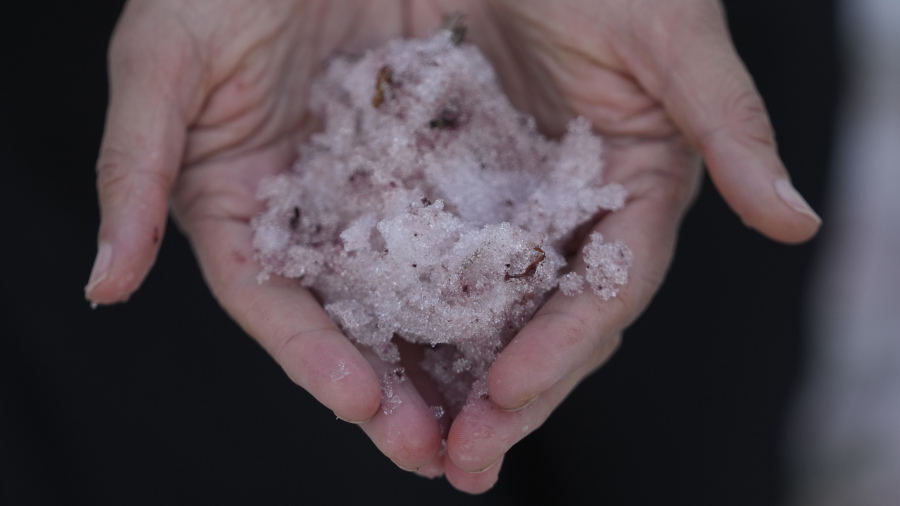LOGAN, Utah — High up in the mountains, amid pinyon pine and quaking aspen trees, the remnants of last winter’s snow is dotted with hues of pinks, purples and oranges.
Hikers and campers liken it to flavored snow cones, Flamin’ Hot Cheetos, pink lemonade, dissolved blood or red food coloring.
“It’s almost like it’s been sprinkled with Himalayan salt or even Kool-Aid powder,” Jana Brough, a mother hiking with friends and family at Tony Grove Lake in Utah’s Logan Canyon, said this week. “But when you scrape it, you can tell it’s just on the surface.”
From the mountain passes above Park City to the Bear River Range near the Utah-Idaho border, last winter’s record snowfall is heating up, baking under the sunlight and turning hues of red. The presence of so-called “watermelon snow” — referred to unofficially due to its pinkish tint — is piquing the curiosities of photo-seeking visitors and raising a host of questions about nature, health and climate. Its prevalence this summer is particularly striking on ridges and in mountain ranges where snow would have melted by now in drier years.
The colorful snow appears in high-altitude environments throughout the globe, including the French Alps and Japan’s Mountains of Dewa, when a perfect storm of conditions — water content, sunlight, temperatures and the presence of nutrients — awaken dormant green algae called chlamydomonas nivalis that thrive in cold temperatures. The algae swim to the surface of the snow, where they bloom and divide. When they’re hit by sun and ultraviolet rays, their color changes to absorb radiation and protect themselves from damage.
Scott Hotaling, a Utah State University ecologist who studies biodiversity in cold and high-altitude environments, likened the algae’s ability to produce a secondary pigment to humans, whose skin uses pigmentation to absorb ultraviolet radiation and protect from the sun.
“They need some kind of pigmentation to prevent damage related to the high UV of the environment they’re in. So they produce the secondary pigment largely for that purpose to protect themselves,” he said.
Many wonder if they can eat the pink snow.
The answer: technically yes, because it is not harmful to ingest, Hotaling said. However, it is not recommended, as it is often found in melting snow banks also dotted with dirt and dust.



